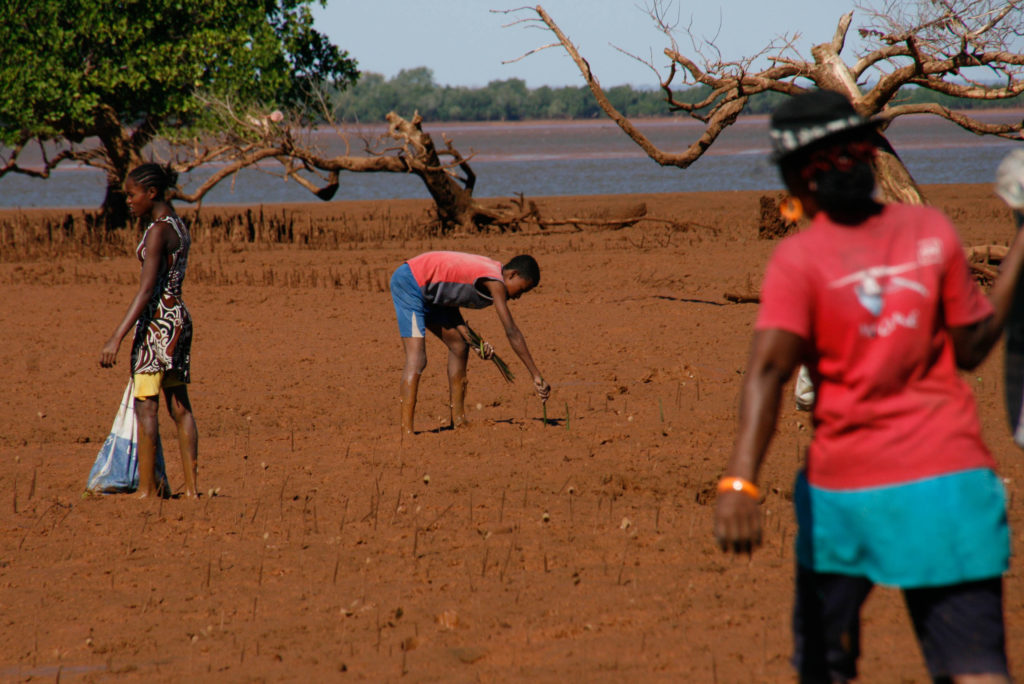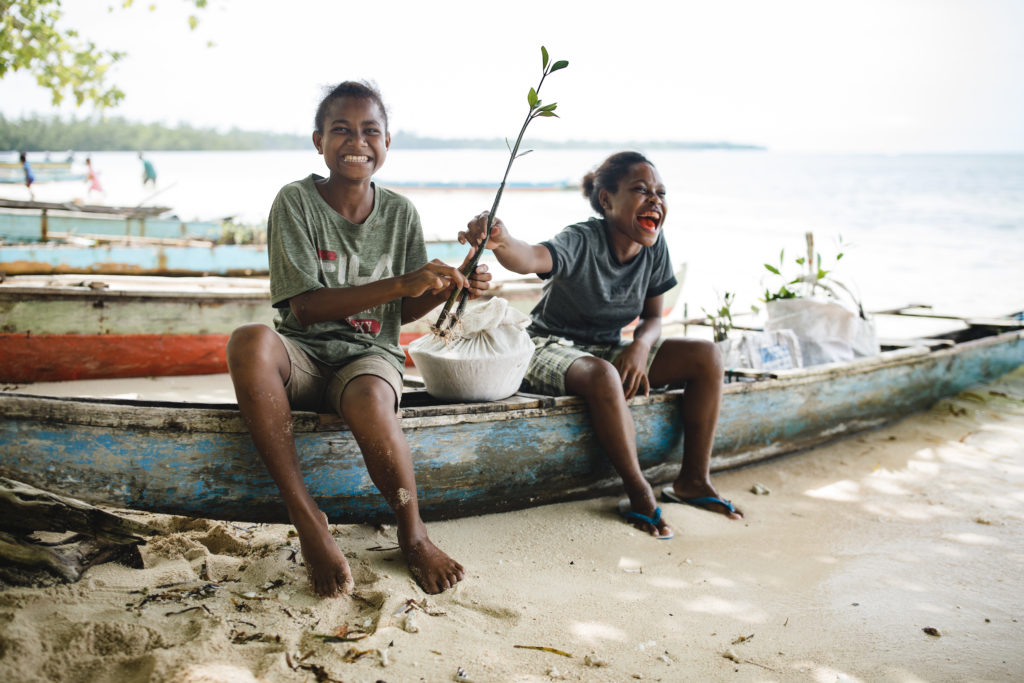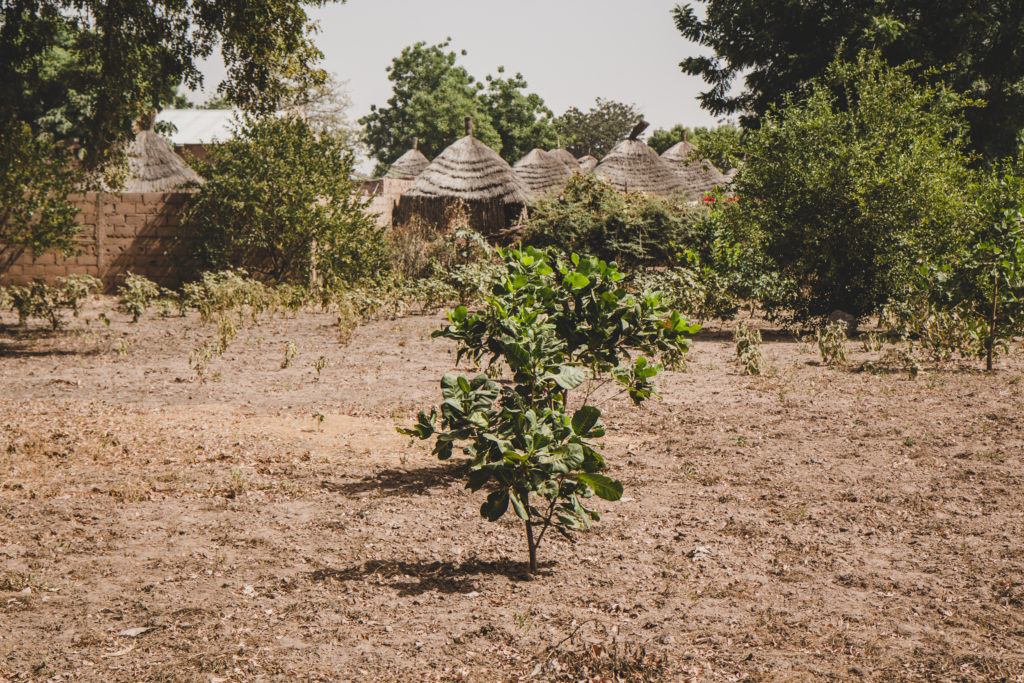Tree planting has always been a huge deal to us at tentree. Since we’ve been in the tree planting business from the day we released our first t-shirt (and long before), we know how incredibly impactful it can be and the potential it has to go really, really wrong. The wrong tree planted in the wrong place, in the wrong way can backfire on well-meaning efforts to benefit people and the planet. And no one wants that.
The good thing for us (and everyone else who’s as pumped to plant trees as we are) is that scientists have come up with “10 golden rules” for tree planting. These rules make it easy to know how to do tree planting right so there’s no harm done. Plus, it helps environmental-ish people like you figure out which tree planting programs are legit and worth investing in.
Here’s a breakdown of the 10 golden rules of tree planting along with how we apply them in all of our planting projects.
The Ten Golden Rules of Tree Planting
1. Protect existing forests first
Keeping forests in their original state is always the best way to go. Undamaged old-growth forests soak up carbon better and are more resilient to fires, storms and droughts than new planting sites.
What we’re doing
In Nepal, deforestation was an unavoidable byproduct of locals needing to farm or sell lumber to survive. The cycle of environmental devastation and poverty continued as water tables dropped, soil eroded and farming plots became less productive. We help the locals protect existing forests and prevent further deforestation. We provide education on the impact of forests on land and agriculture, plant in deforested areas, and provide sustainably harvestable forest products locals can sell for income so old growth doesn’t need to be cleared. We’d call this a win-win-win.
2. Put local people at the heart of tree-planting projects
Studies show that getting local communities on board is key to the success of tree-planting projects. Ultimately, locals have the most to gain from looking after the forest, plus getting local communities onboard makes forest care a sustainable, long-term practice instead of a one-time initiative.
What we’re doing
Connecting with the local communities is the starting point of all of our reforestation projects. In Madagascar, we pay locals to plant and protect the trees. We also teach them about the importance of trees, how to use them sustainably as resources and food sources, and how to sell fruit and lumber. All of this leads to a steady flow of disposable income to send their children to school, put food on the table and maybe even start their own business.

3. Maximize biodiversity recovery to meet multiple goals
Reforestation isn’t just about planting trees. Efforts should also include preventing climate change, improving conservation, and creating economic and cultural benefits for local communities and the world.
What we’re doing
In each of our planting sites, we’re working with local planting partners to educate and equip locals with the tools, knowledge and resources to transform their natural environment, their community and their family. In Indonesia, for example, planting mangrove trees in areas struggling to recover from natural disasters has provided jobs for over 100 villagers, decreased soil erosion, and created a habitat for native fish to spawn.
4. Select the right area for reforestation
Bring deforested areas back to life — plant trees in areas that were once forested. Don’t alter other natural habitats like grasslands or wetlands.
What we’re doing
We always do our homework to make sure we’re planting the right trees in the right places. In Mnurwar, Indonesia, 1000 hectares of mangrove estuary that locals depended on to support the fish population was wiped out from a major tsunami. At our planting site in Mnurwar, we’re reforesting the estuary with native mangroves, and as a result recreating the natural environment and revitalizing the local community and economy.

5. Use natural forest regrowth wherever possible
Letting trees grow back naturally can be cheaper and more efficient than planting trees.
What we’re doing
Many of our sites depend on natural regrowth alongside tree planting — the deforestation through natural disasters and human activity is so much larger than what natural regeneration can keep up with. For example, we plant on wildfire sites to support the natural regrowth so that the forest can bounce back quicker.
6. Select the right tree species that can maximize biodiversity
Picking the right trees is crucial to make sure tree planting benefits both people and planet. The best combination, according to scientists, is a mixture of trees native to the local area including some rare species and trees that provide economic perks, but avoiding trees that could become invasive.
What we’re doing
In Senegal, we plant “forest gardens” that provide sustainable income and farming practices for local communities, while creating a green barrier to prevent desertification. Each forest garden is made up of more than 50 different tree species, including timber trees, fast growing trees, and fruit and nut trees. If you want to get specific, jujube, acacia, mango, and leucaena are some of the species we plant.

7. Make sure the trees are resilient to adapt to a changing climate
Use tree seeds that can thrive in the local climate now and in the future.
What we’re doing
One of the trees we plant in Jasper, Canada is white bark pine. It’s a vital species in that ecosystem and it’s currently at risk because of severe devastation caused by disease. Some of the whitebark population are naturally resistant, but not very many. To combat this, we’re planting resistant seedlings to help whitebark pine populations become more resilient to climate change and worsening outbreaks.
8. Plan ahead
Plan how to source seeds or trees through working with locals.
What we’re doing
We work with local planting partners in all of our planting sites to make sure that seeds and trees are sourced from local forests and nurseries, and ultimately communities are restored to self-sufficiency as the land is brought back to health. Locals have created their own self-sustained nurseries in Madagascar, Indonesia and Nepal.

9. Learn by doing
Combine scientific knowledge with local knowledge. Take it slow — small scale trials should take place before planting large numbers of trees.
What we’re doing
We apply this rule to all of our planting sites, as we’ve chosen to partner with local organizations that are developing plans for tree planting sites with local communities. It’s a team effort — in developing communities, organizations bring scientific knowledge and education on reforestation and ecosystems to inform project planning, while local communities may have specific needs, limitations or insight that will guide the tree planting plans.
10. Make it pay
The sustainability of tree planting rests on a source of income for all stakeholders, including the poorest. Build tree planting into the local economy so that locals and communities can flourish along with the forest.
What we’re doing
In Nepal only 46% of the adult population is employed, and one quarter lives on less than $2 per day. Most of their income relies on agricultural production. Entire villages are lifted out of extreme poverty, children can go to school, plus water tables rise, water purity improves, agricultural production increase, and the wildlife habitat is being restored as we replant and protect healthy forest systems together.
Want to take a deep dive into our tree planting sites and process? Check out all of the countries we plant in to learn more.

